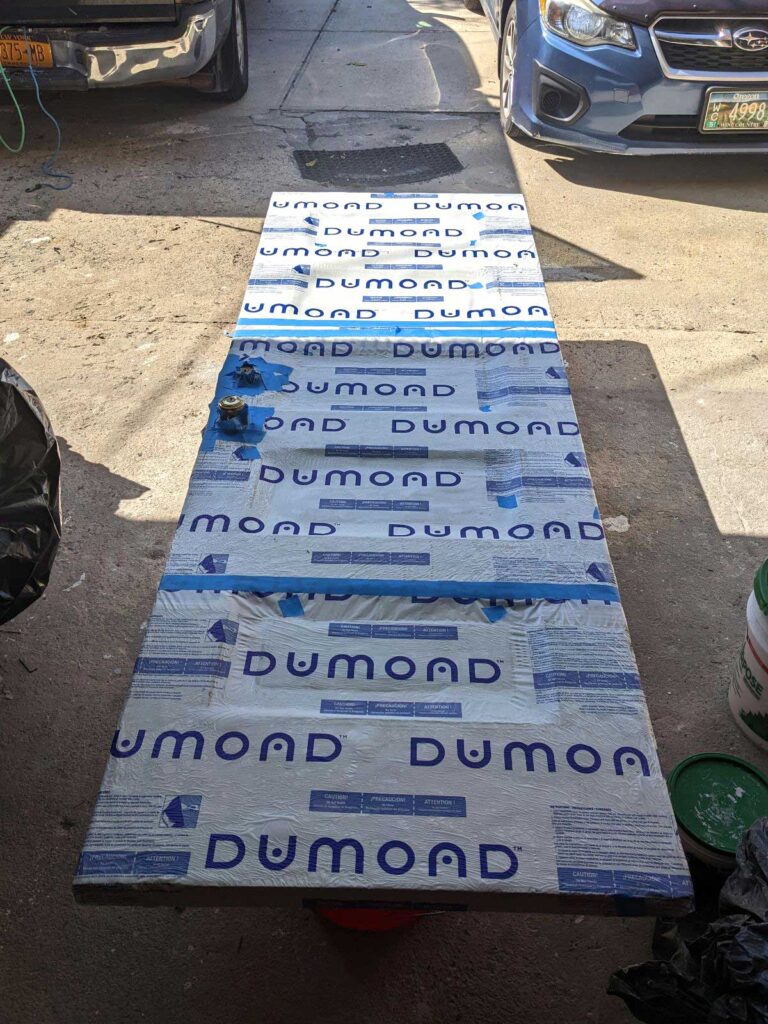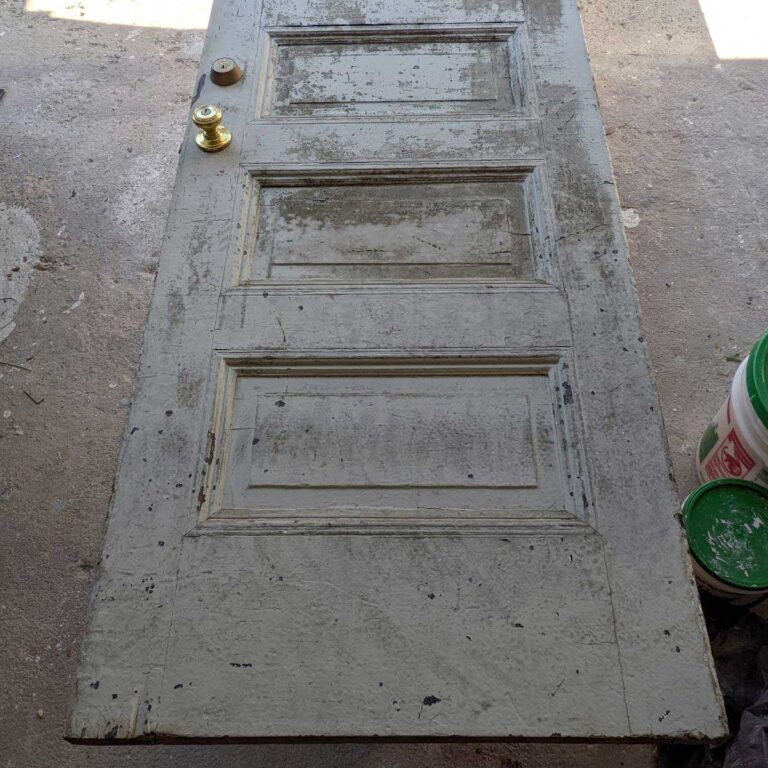
Using Peel Away
Peel Away brand finish remover is invaluable to our refinishing process, but does require a specific application to work successfully.
Application of Peel Away stripper: Using a putty knife or a specialized paint applicator, we apply a thick and even layer of the Peel Away stripper onto the painted surface of the old door. The recommended thickness is typically around 1/8 to 1/4 inch. We ensure that the stripper covers the entire painted area.
Covering and dwell time: Once the Peel Away stripper is applied, we cover it with the provided Peel Away paper, gently pressing it onto the surface to ensure good contact. We’ll pop any air-bubbles with a knife and tape them off to make sure we have 100% contact because the covering helps to extend the dwell time and prevent the stripper from drying out too quickly.
Paint removal: After the specified dwell time has passed, we carefully remove the covering from a small test area to check if the paint has softened and is ready for removal. If the paint appears softened and can be easily lifted, we proceed with the paint removal process, using a putty knife, scraper, or a specialized stripping tool to gently scrape off the softened paint. It’s important to work in small sections and apply light pressure to avoid damaging the underlying surface. The paint typically comes off in layers or sheets.
This part of the process involves violatile fumes so we work in a well-ventilated area using appropriate safety equipment including respirators
Clean-up: Once the paint is removed, we clean the surface using mineral spirits. This helps to remove any residue or traces of the stripper. We ensure thorough cleaning to prepare the surface for further painting or refinishing.
It’s important to note that the specific instructions for using Peel Away brand stripper may vary depending on the product variant and the manufacturer’s recommendations, but this is the basic process we use to prepare old wood work for refinishing.

